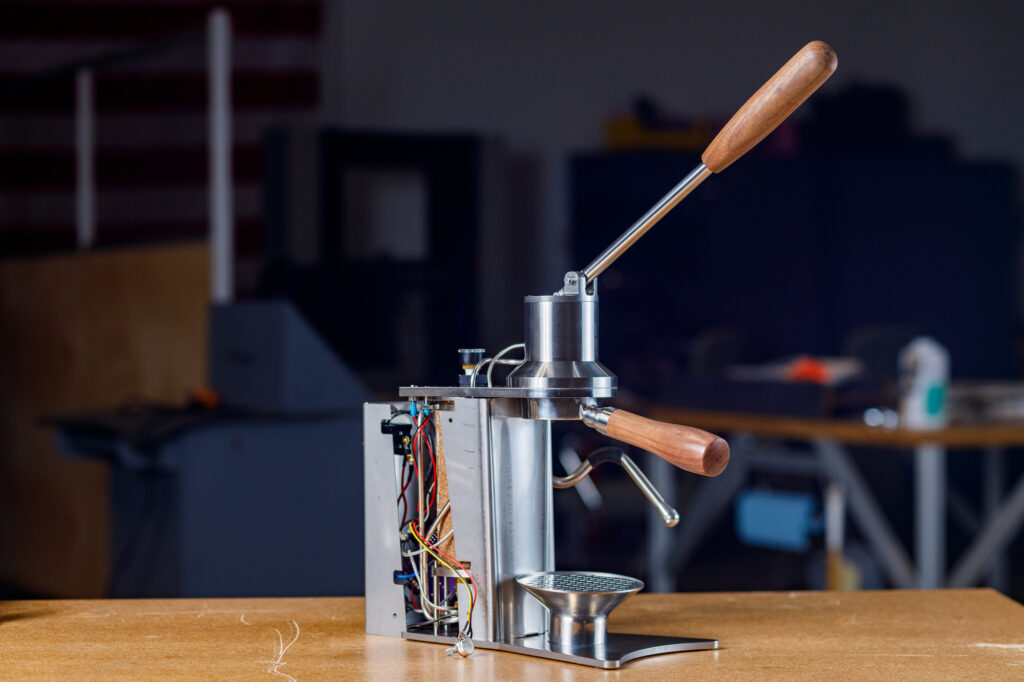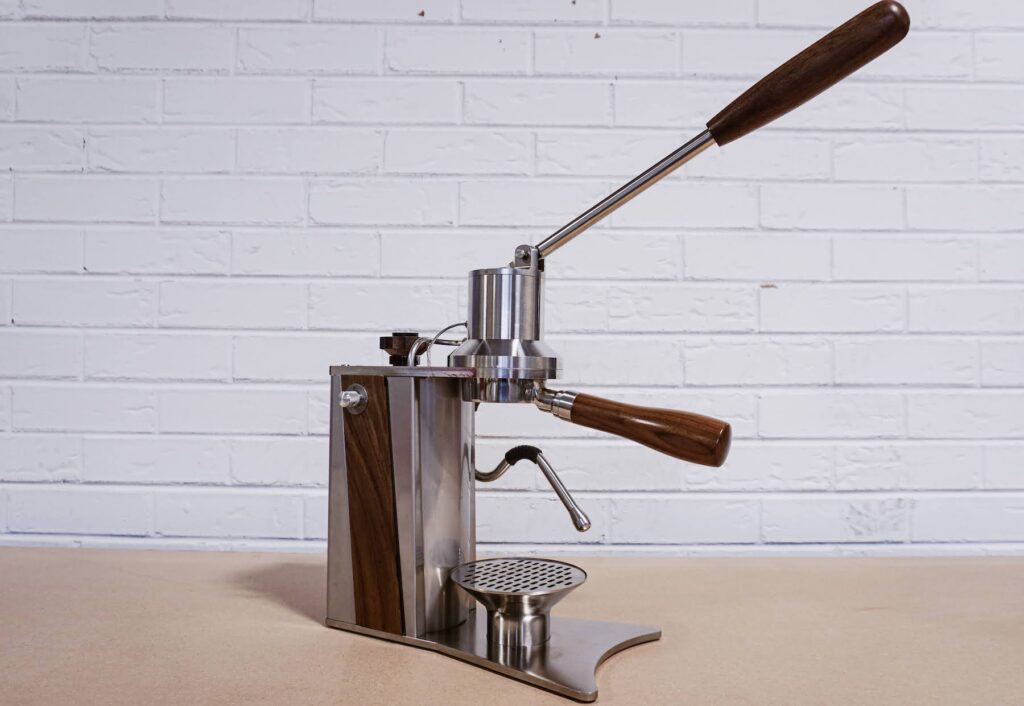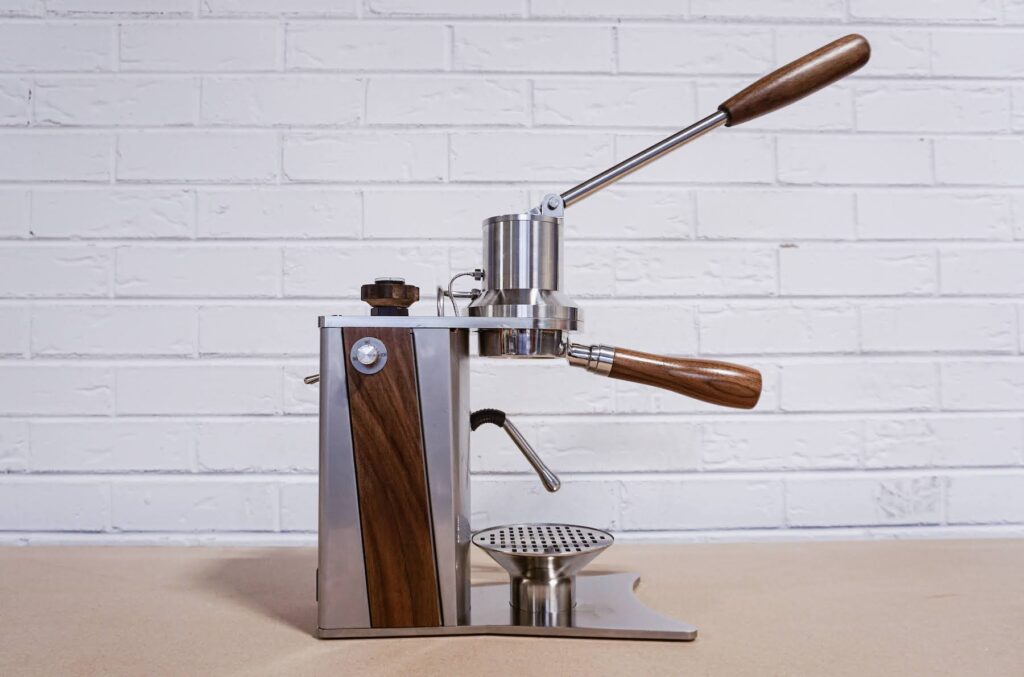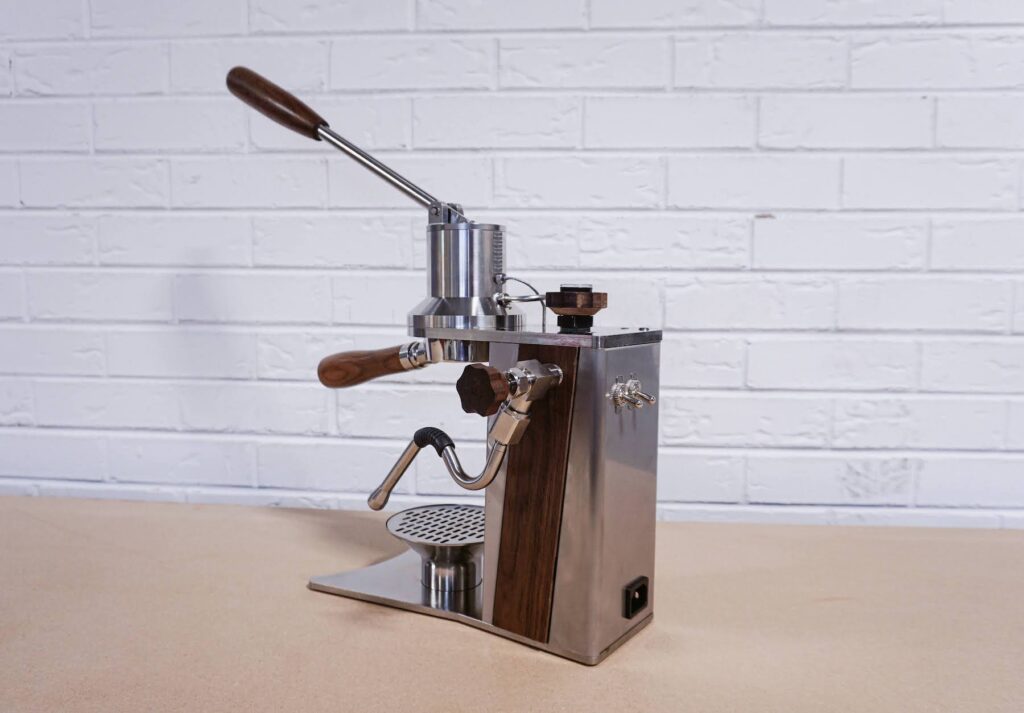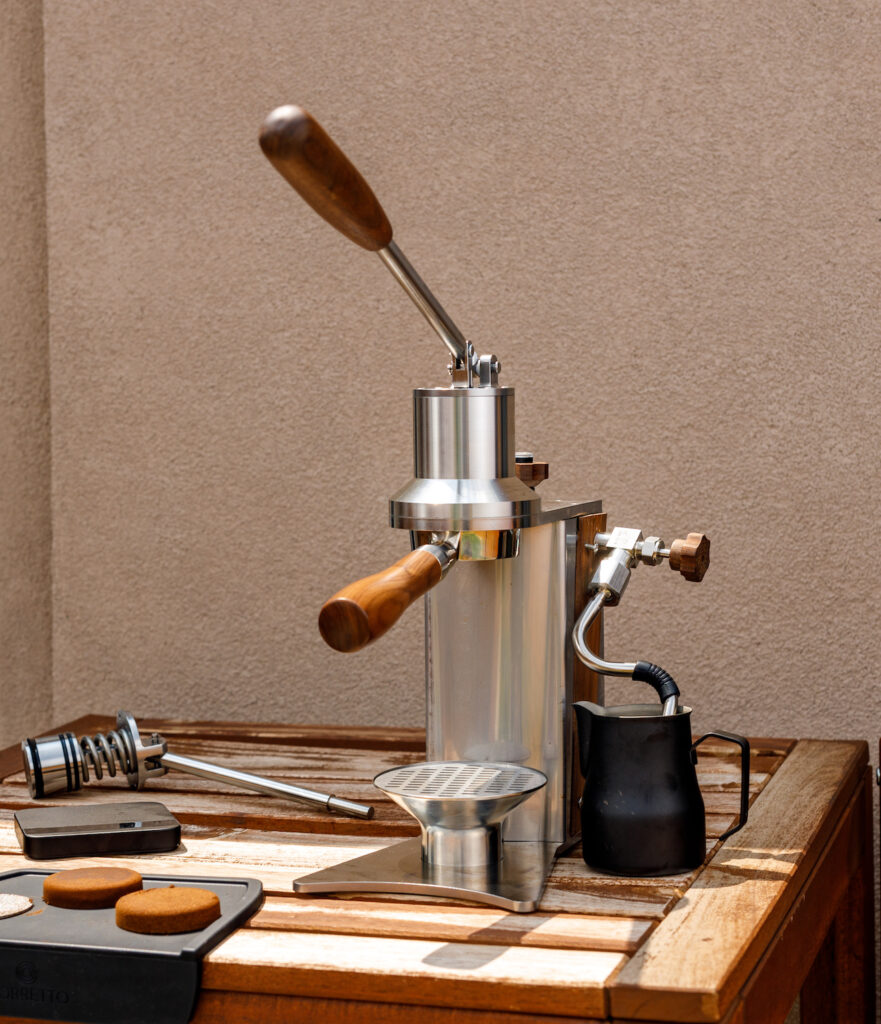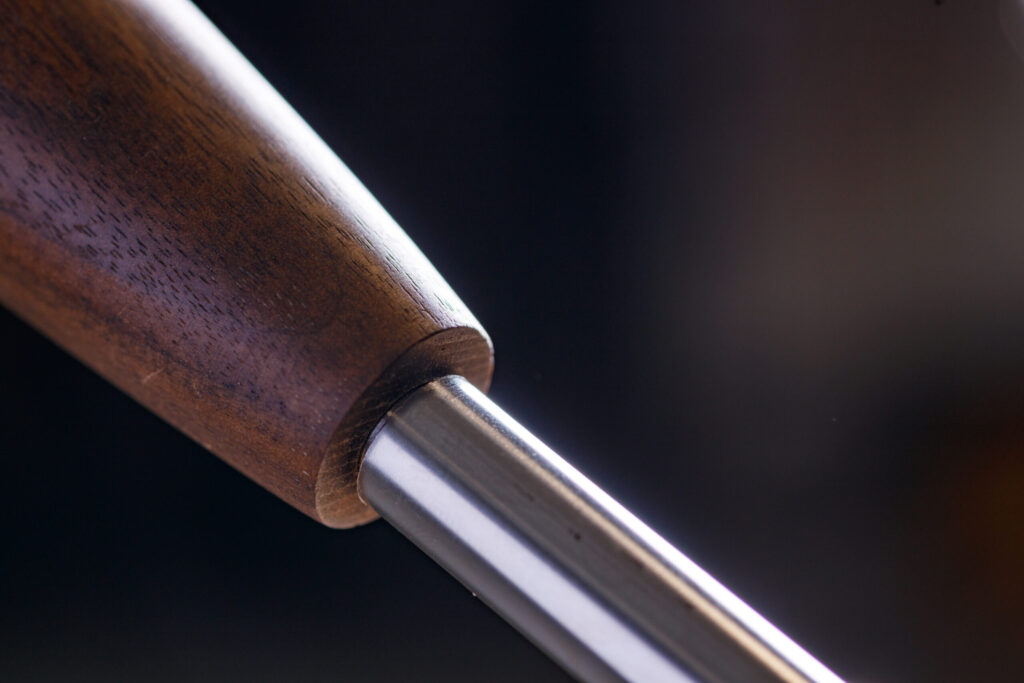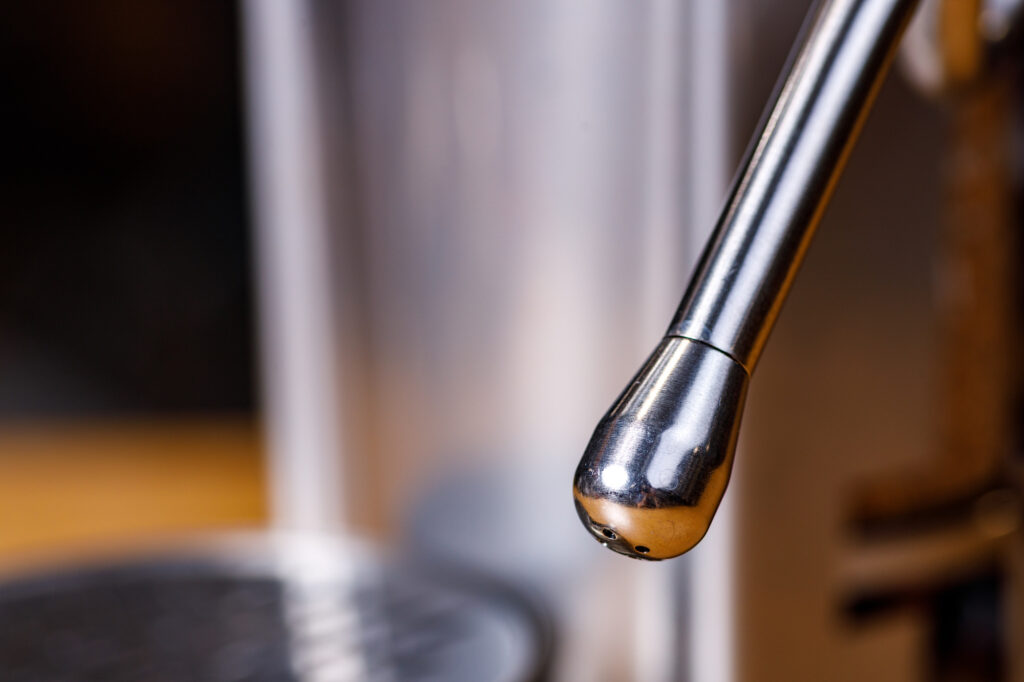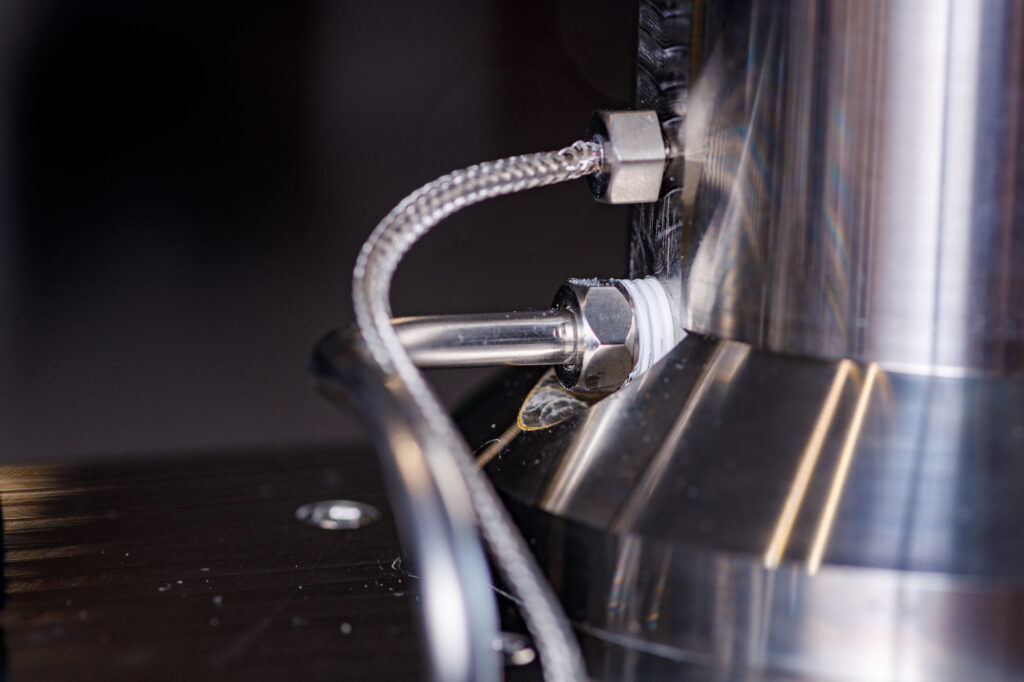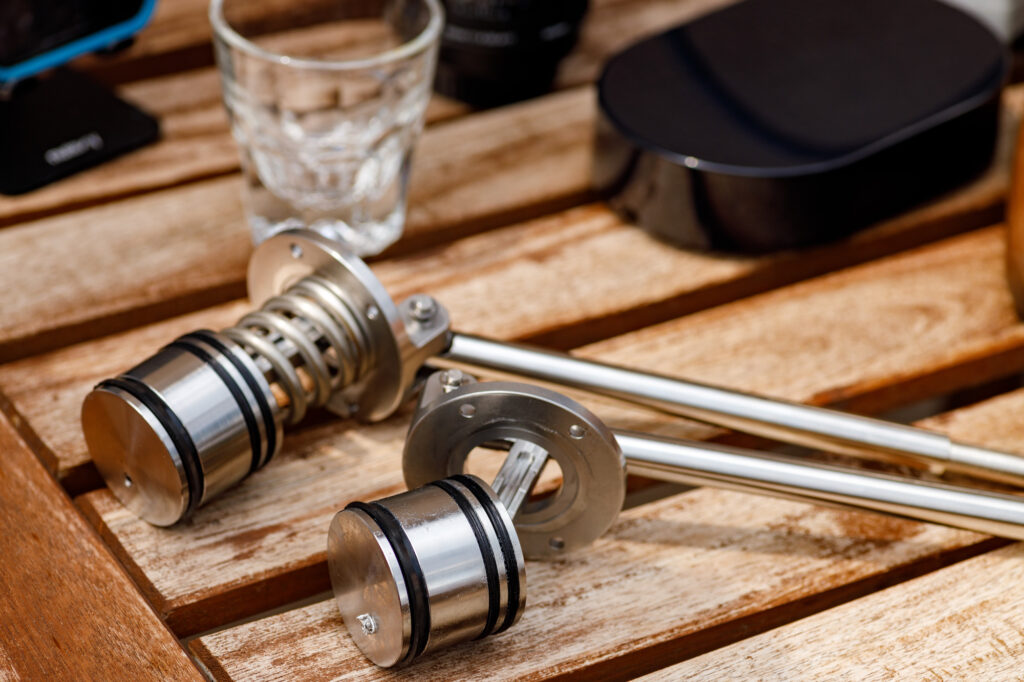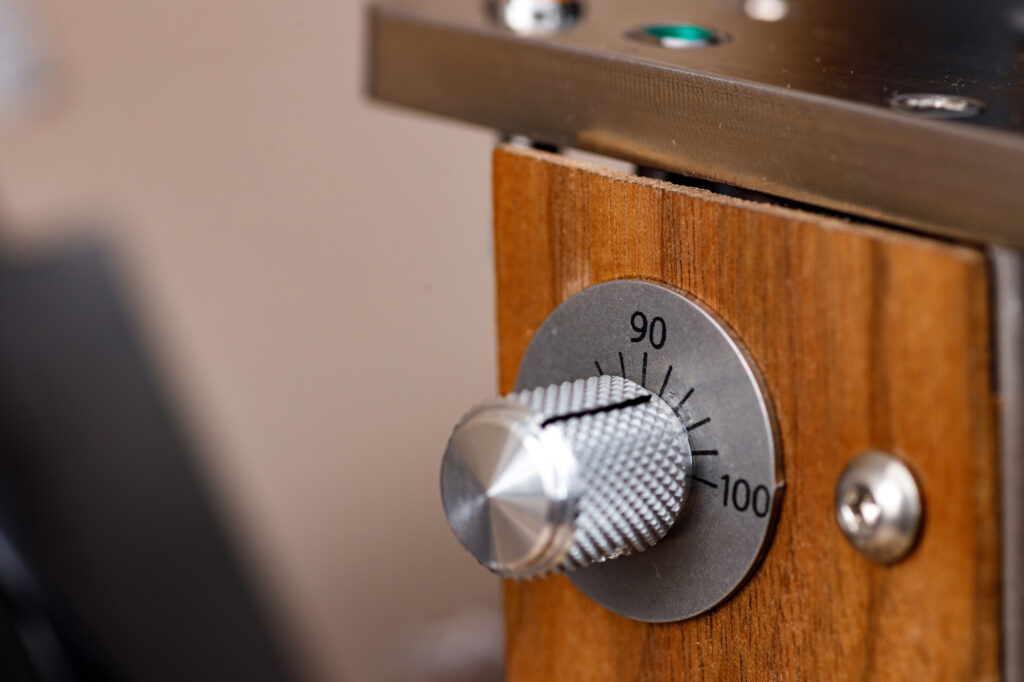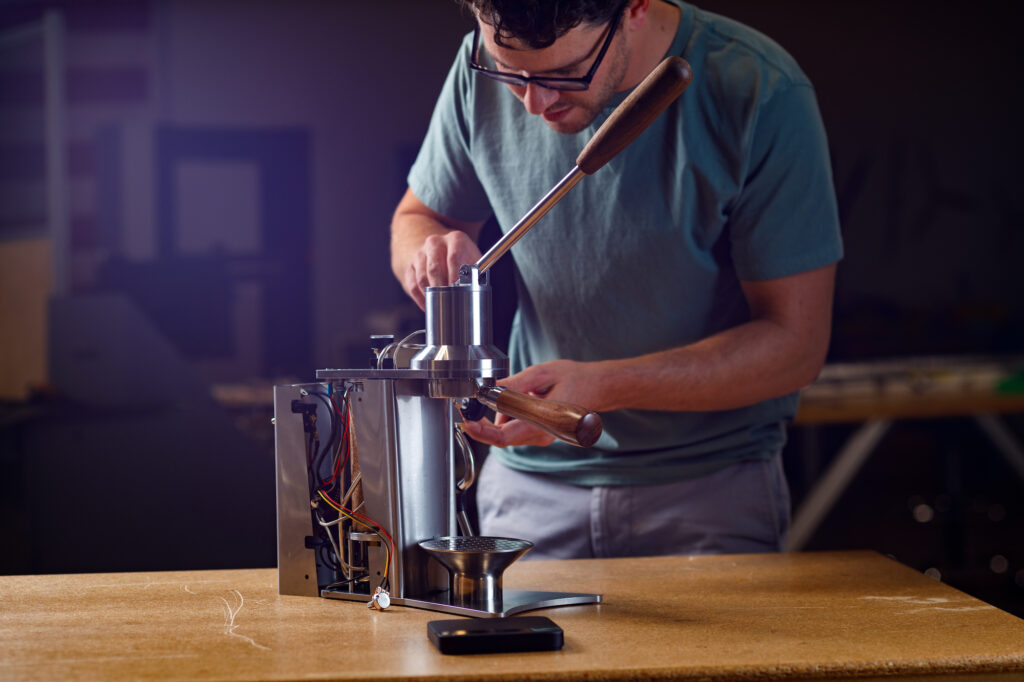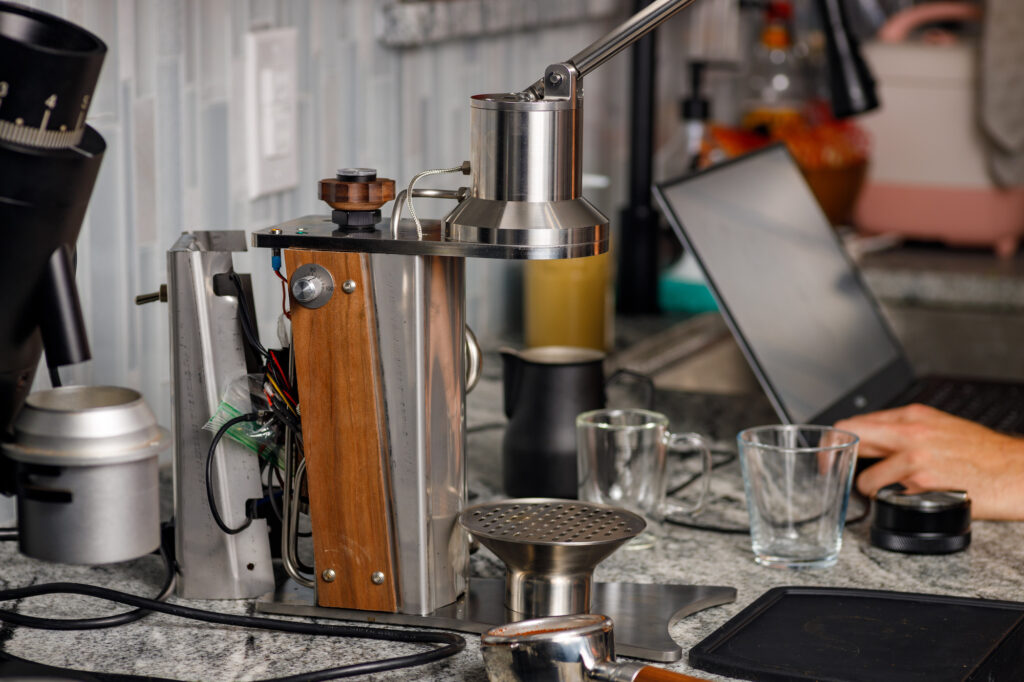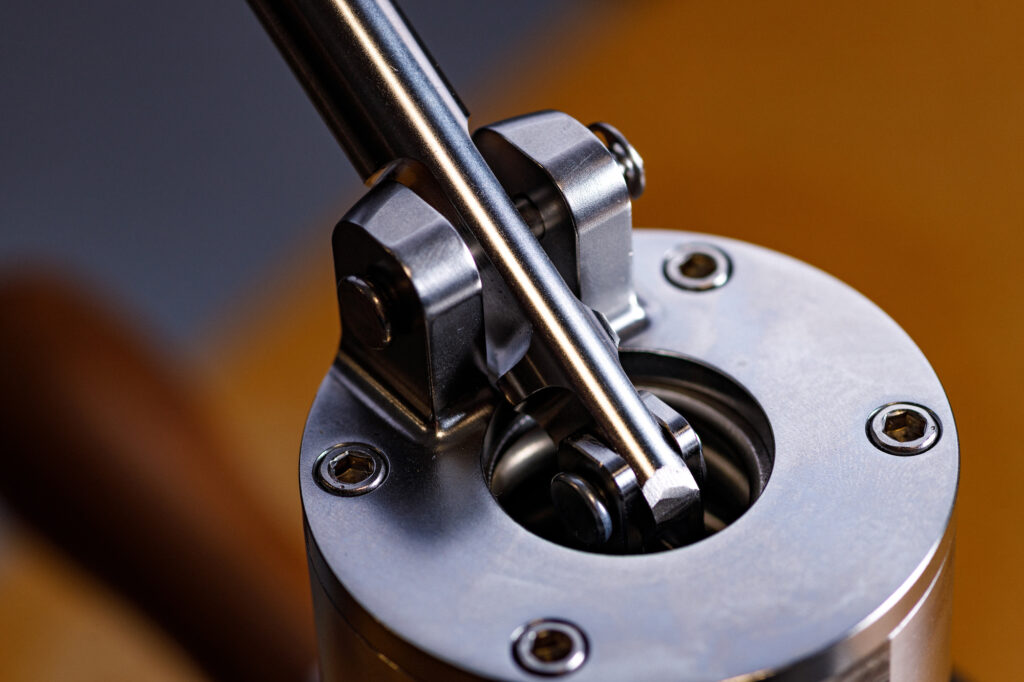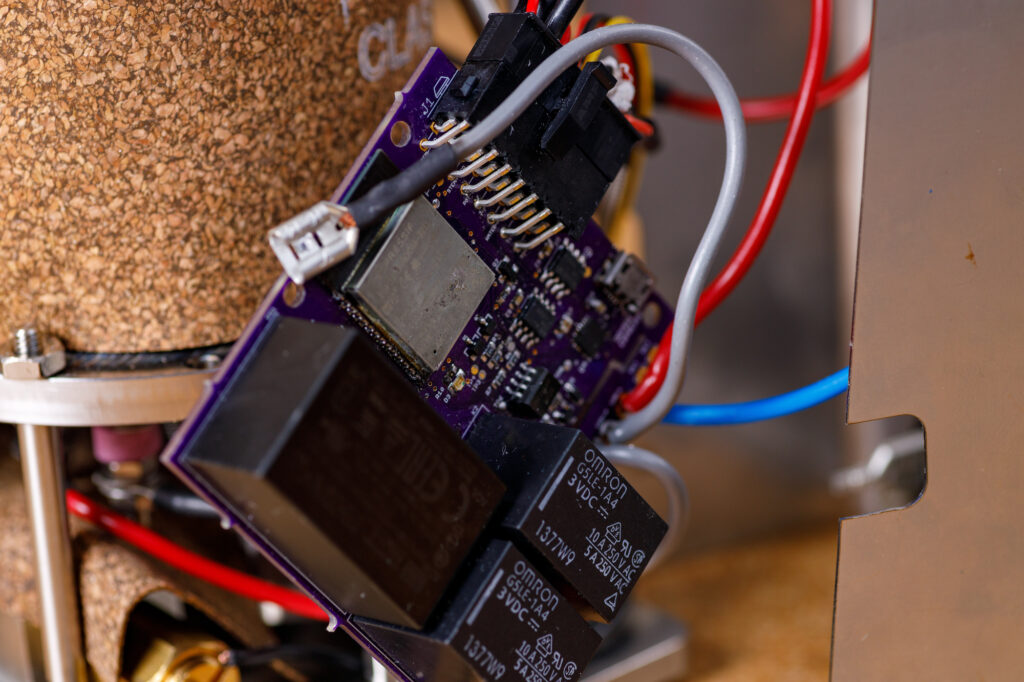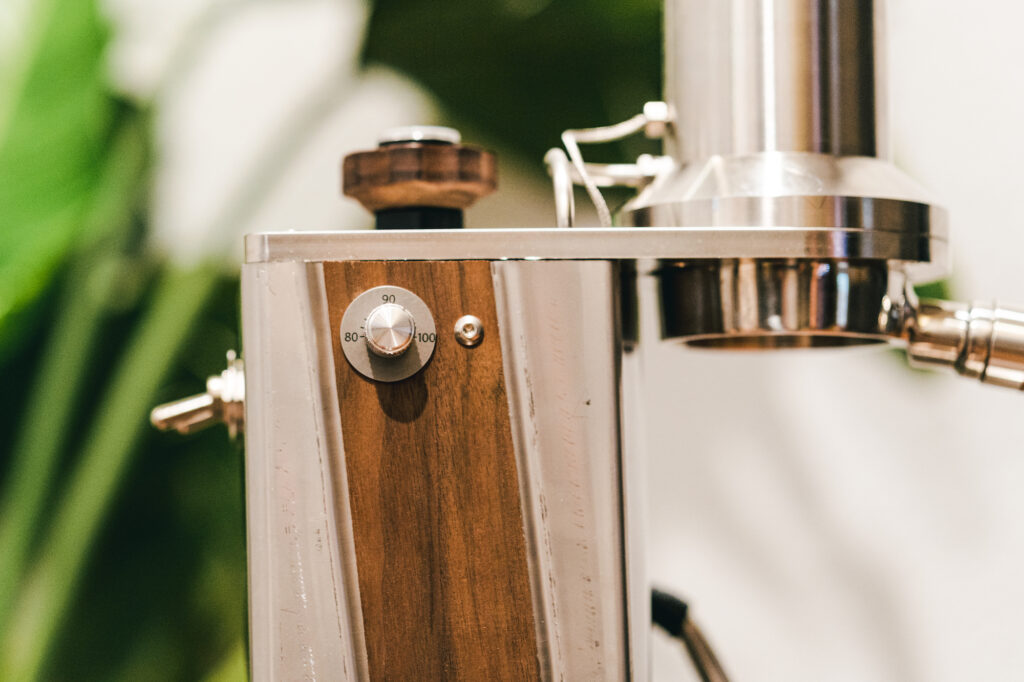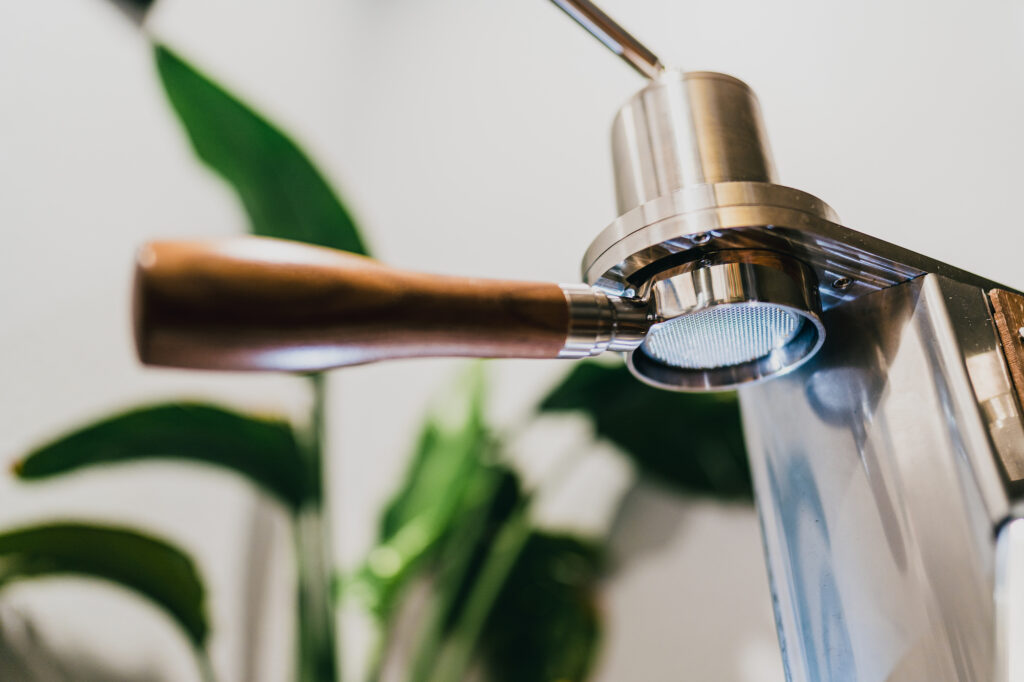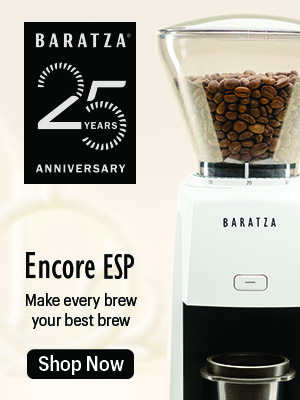Let’s meet with a very interesting person: Ross Ainsworth. A mechanical engineer with a background in the aviation industry, Ainsworth is also someone who loves coffee and espresso, and has a special love for lever espresso machines.
That passion engineering and for espresso and lever machines is behind the foundation of Ainsworth’s company: Odyssey Espresso. The company’s first product, designed by him, is the Argos Lever Espresso Machine.
We’ve detailed the Argos in a blog post, also published the same day as this interview; please take a moment to go read that if you want the full details on this new brewer.
Suffice to say though, the Argos has the potential to be a game changer; with its choice of 6 or 8 BAR springs, or the ability to reverse the piston mount and use it as a direct lever espresso machine. The addition of the control app and bluetooth connectivity really affords the ability to fine tune your espresso making using an almost scientific method approach to pulling shots. And, the fact that it can be set up for left or right handed use is not lost on this left-hander conducting this interview.
We recently had a long chat with Ainsworth about the Argos, what drives him to produce these products, and what the future holds for the Argos and other products Odyssey Espresso has in the planning stages.
Interview with Ross Ainsworth
CG: Your background is in mechanical engineering and the aviation industry; what made you jump into the world of espresso technology?
Ainsworth: My passion for coffee and espresso has grown significantly over the past 10 years. When it came time to step up my home espresso setup from the moka pot and handheld espresso makers, I was shocked at the prices.
From there, I thought I could use my skills to try and create my own. I ran some numbers and decided I could design a simple yet modern machine for an appealing price. Everything developed and progressed from there.
CG: What made you gravitate towards a lever espresso machine design as your first foray into the world of espresso technology?
Ainsworth: My goal was always to produce a simple yet affordable machine.
With that said, the dipper style lever machine had a lot of advantages. For one, there is no other modern looking PID controlled lever machine on the market for under $1000 in US dollars.
The dipper style also meant that no pumps are required since it relies on boiler pressure and the lever to produce necessary pressures. This was appealing because pumps are expensive, loud, and potentially unreliable. Also, as a mechanical engineer, I just love the simple beauty behind pistons, linkages, and springs to utilize mechanical advantage.
CG: Dipper Style… I don’t think I ever heard that term before for a lever machine! Where did you pick that up?
Ainsworth: I learned this term on the forums. Unlike a dual boiler or heat exchanger style espresso machine that uses a pump to drive the brew water into the grouphead, a “dipper” style machine uses boiler steam pressure to drive the brew water up to the group.
This is the traditional method for lever machines where the piston nominally sits in front of the water feed inlet. Once raised, the inlet is no longer blocked, and the boiler pressure which is usually at 1.5 to 2.5 BAR, forces hot water into the brew chamber and can act as a sort of ‘pre-infusion’ stage.
An issue with the classic dipper design is that the high boiler temperatures required to create the necessary steam pressure causes the group to overheat quickly and cause higher than desired shot temperatures. I’m able to combat this issue with a long external fill tube to the group, a relatively isolated group from the boiler, and PID control that references an additional group thermocouple to tell the boiler to adjust water temperature according to the grouphead temperature allowing each shot to extract at the desired set temperature.
CG: The Argos is unique in that it can be converted rather easily from a direct lever system to a spring lever system; was that the design goal from the start?
Ainsworth: No. Somewhere throughout the initial concept sketches and ideation I recognized that this could be possible. While it took some design iteration to get it right, I was excited when it worked out as I think it’ll be a really unique option to make the machine more versatile for both beginners and experts alike.
CG: What are the benefits in your mind to a spring lever espresso delivery system?
Ainsworth: A spring lever is simple. You pull the lever to compress a spring, release, and you’re done. The extractions are very consistent and always produce a smooth declining pressure profile.
CG: Same question about the other delivery technology: what are the benefits to a direct lever system, where your hand is the “pump” as it were?
Ainsworth: Pulling a direct lever definitely has a learning curve at first – it can be difficult to get a nice and consistent extraction. For those that like to experiment, it’s nice to customize your pressure profile based on the type of bean or roast that you’re using. It’s a fun process of varying pressure in order to create that perfect shot.
CG: For you, working with this machine for a while now, what’s your preference? Spring or Direct Lever?
Ainsworth: I personally enjoy the direct lever experience. While noticeably more difficult to get right, I enjoy perfecting my technique and feeling the actual pull as the shot extracts.
We’ve also got an Argos companion app for both iOS and Android which pairs with our wireless bluetooth pressure transducer, which is an add-on item, to plot extraction pressure in real time. As an engineer I have to appreciate the hard work that both my UX Designer and Developer put into this app which really adds to the whole experience.
CG: Who is the ideal customer for the Argos espresso machine?
Ainsworth: It’s meant for the novice and expert alike! The ideal customer could be anyone just getting into espresso or specialty coffee or the advanced home barista that wants to add a fun modern looking machine to their collection.
CG: You opted to go with a 58mm filter basket design which historically hasn’t been used much in home lever espresso machines; any challenges in that regard vs the usual 49mm or 51mm piston and portafilter designs we see on Elektras and Pavonis?
Ainsworth: I liked the idea of having a broad range of off the shelf 58mm products. While the machine ships with a high quality shower screen, basket, and all stainless steel portafilter, many users may already own nice competition baskets of different sizes, precision tampers, levelers, funnel, et cetera, which I wanted to be compatible with the Argos.
CG: Any challenges in incorporating a PID temperature control to the boiler?
Ainsworth: No significant challenges other than not being a controls expert. The circuit board was designed with the intent of running PID controls so the integration was simple. Once I got the help of some professionals, it’s become a fun task of tuning and optimizing the control logic and watching the progression of the machine’s response and stability to each change.
CG: The Argos is designed to have key elements, like the steam wand, installed on the left or right handed side. As a left hander, I appreciate that. What challenges did this present, if any?
Ainsworth: It really didn’t present any challenges which is exactly why I wanted to offer this option. I’ll have steam lines pre-bent and sent to me so I just spec them to be bent one way or the other and swap sides between the steam wand and temperature knob (located in the same spot on either side).
CG: The Argos has wood elements; any concern about the longevity of those wood parts on a hot espresso machine, steam and water over the years?
Ainsworth: I’ve always loved the aesthetic of wood accents on stainless steel so I definitely wanted to include the wood. As long as people clean and take good care of their machines, I’m not too worried about the longevity given that wood is already a common material on espresso machines.
CG: That’s true especially for commercial machines! But I’ve experienced some wood-incorporations in coffee brewers, including pour overs that have degraded or warped in just a few short years. While I’m not concerned about the handles at all, it’s the side panels that could be pose a problem long term. Are they easy to replace if there is an issue?
Ainsworth: I definitely recognize the concern and personally have not noticed any issues in the past 2 years of prototype testing. The most mess I see is in the drip tray (which is removable for washing and held in place by a magnet) as well as some occasional splatter on the front cover. In the unlikely event that side panels degrade, they’re magnetically held in place and easily replaceable.
CG: Odyssey Espresso says the transition times between steaming and brewing is about a minute either way; What temperature is set for steaming (or pressure), and how do you get such a fast transition back down to brewing temperatures?
Ainsworth: On the prototype, the steam setting is set to 130C which typically ranges from 2-3 bar pressure. It works out well that dippers require the boiler to be hotter than brew temperatures to have the required pressure for getting water into the grouphead. This machine pulls the first shot at around 128C to get an output of 92C. As the group heats from each shot the set temperature declines slightly but always remains relatively close to that steam temperature. The small boiler provides quick thermal response in both directions.
CG: This machine has a lot of options, including the choice of either an 8BAR spring or a 6BAR spring. What are the benefits and detriments of both?
Ainsworth: The 8BAR spring provides a traditional strong espresso taste and mouthfeel allowing for a finer grind but can be more difficult to get right with a higher sensitivity to puck prep. The 6BAR spring is great for low pressure turbo, as I like to call it, shots which have been reported to have higher extraction yield. One can expect a sweeter and more balanced shot with the lower pressure spring while also requiring less force to pull the lever handle down and being less prone to channeling.
CG: Speaking of options, I read that this machine will be optionally bluetooth enabled? Walk us through the reasons and benefits from that?
Ainsworth: All units have Bluetooth capability so we decided to develop an app to display general machine data like temperature and fluid level as well as offer an additional wireless pressure transducer that will plot real time pressure as users are pulling down on the lever in the direct configuration. This is a great fit for people that may want to save a pressure profile from a pull that they really enjoyed and use that as an overlay to recreate the shot in the future. This also allows users to takes notes as they try out different roast styles, temperatures, bean origins, et cetera, to keep track of what they like and don’t like.
CG: What other options do you plan with the machine?
Ainsworth: Other options include a piston pressure gauge, custom angular double spouted portafilter, walnut vs ash wood options, left-hand vs right hand steam wand position, and potentially a plumb in direct fill option we’re currently testing.
CG: Wow, plumbed in. I don’t think I’ve ever seen a home lever espresso machine with that option. The downside is it would have to stay completely stationary, but the upside is never having to worry about filling or emptying the machine. Do you think there’s a market or demand for that?
Ainsworth: I actually wanted to incorporate this aspect very early on when playing around with boiler generated vacuum which occurs as the machine cools and steam condenses. I figured it would be fun to take advantage of the thermodynamics at play and use that vacuum to suck in water and refill itself. This simplistic approach came with several challenged and eventually evolved into a plumbed in version.
There is a surprising number of people that have plumbed in setups at home which has led to a significant number of inquiries about the option and overall positive response.











